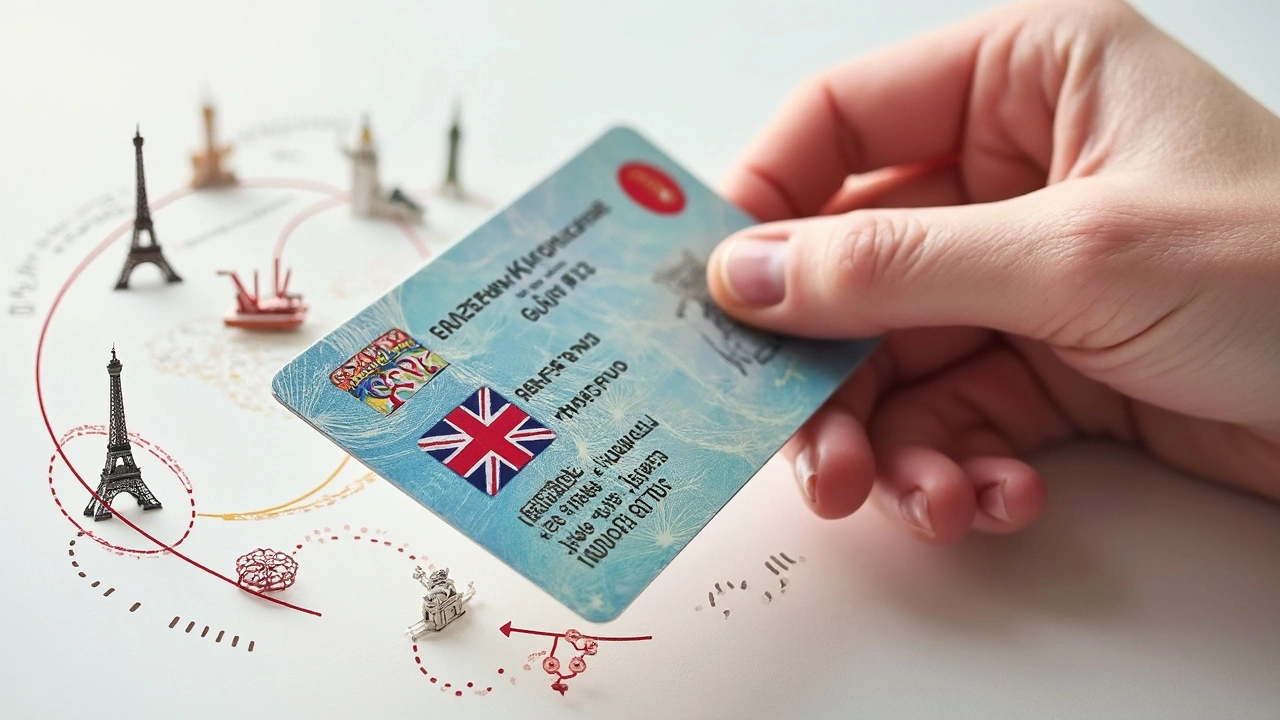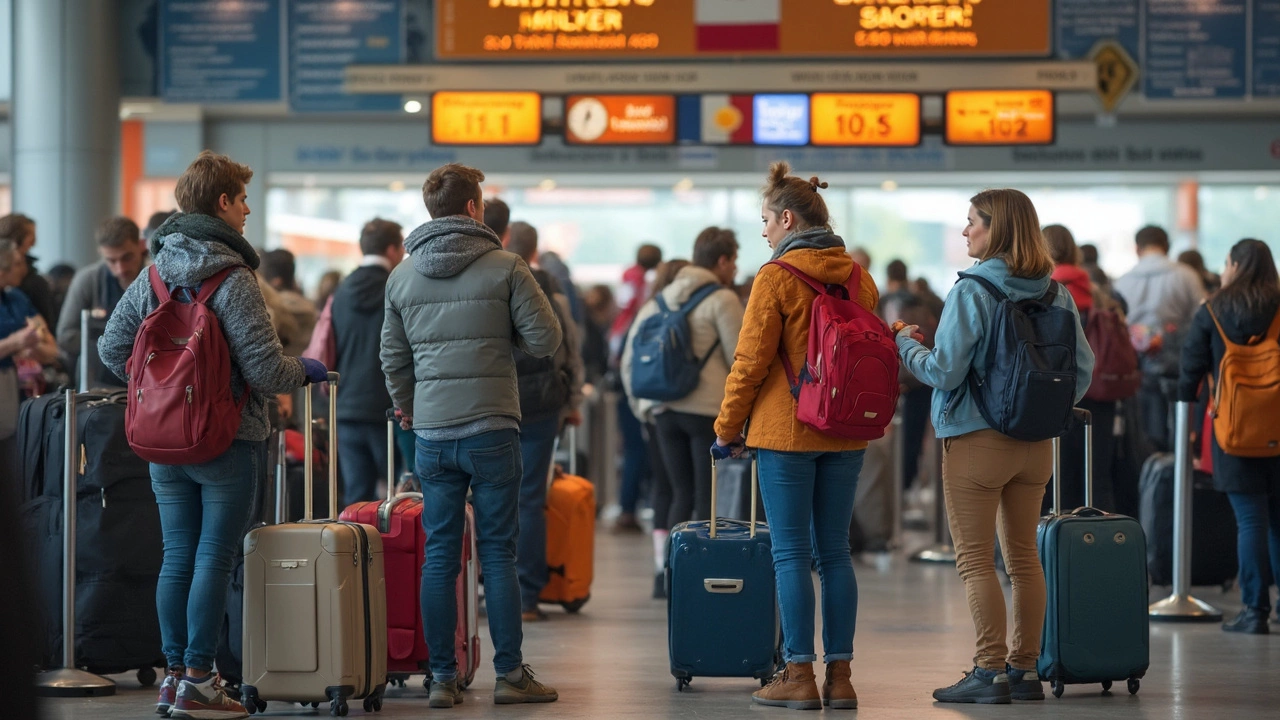Packing for a road trip and wondering if you can skip your passport? Here’s something people often get wrong: not every country cares about your enhanced driver’s license (EDL). It’s not some magic ticket for global travel. But if you’re living in the U.S. or Canada, it might save you serious hassle at the border.
An EDL packs a punch. It’s got extra info and security features your regular license doesn’t. It’s not just proof you can drive; it’s good for getting through certain land and sea borders, too. But here’s the catch: only a few places actually accept it, and only for specific types of crossings. So, before you stuff that EDL into your wallet thinking you’re good for Europe or Asia, let’s break down exactly where it works and what you need to watch out for.
- What Exactly Is an Enhanced Driver's License?
- Where Is an Enhanced Driver's License Accepted?
- Comparing an EDL to a Regular License and Passport
- Tips for Hassle-Free Travel with Your EDL
What Exactly Is an Enhanced Driver's License?
So, what’s all the fuss about an enhanced driver's license? Think of it as your regular driver’s license—just beefed up. It still lets you drive, but it’s also proof of your citizenship and your identity. The big plus: it has security tech built in, like machine-readable zones and RFID chips, which border agents can scan fast.
This isn’t just some plastic with a cooler design. Only a handful of U.S. states (like Michigan, New York, Vermont, and Washington) and some Canadian provinces (Ontario, Manitoba, British Columbia, and Quebec) actually offer these things. You typically have to prove your identity, U.S. or Canadian citizenship, and residency. It’s a step up from the regular license you get after a Pass Plus course—or any driving test, really.
As the Department of Homeland Security puts it: “An EDL provides travelers with a low-cost, convenient alternative for entering the United States from Canada, Mexico, or the Caribbean through a land or sea port of entry.”
But don’t go thinking it can replace your passport everywhere. EDLs are only valid for land and sea crossings—no flying. Even then, it’s only between the U.S., Canada, Mexico, and some Caribbean countries. If your adventures take you beyond those borders, you’re going to need your traditional passport.
- EDLs prove both driving ability and citizenship.
- Only offered in select places, not nationwide or worldwide.
- Can only be used for certain border crossings—no airport security line will take it internationally.
- Security features help fight fraud and speed up border checks.
The bottom line: an EDL gets you extra perks, but it doesn’t open every door. If you’re thinking about getting one, make sure your state or province actually offers it first.
Where Is an Enhanced Driver's License Accepted?
Here’s the real scoop: you can’t just flash your enhanced driver’s license (EDL) and waltz into any country. The list is short and specific. Right now, an EDL is only accepted for land or sea travel between certain places. This is especially handy if you live near the border or want to avoid the hassle of hauling your passport on weekend trips. Migrating between the U.S. and its friendly neighbors? That’s where your EDL actually does the job.
The main countries and regions where you can use an EDL are:
- United States
- Canada
- Mexico (land and some sea crossings, not air travel)
- Caribbean countries (only for certain closed-loop cruises departing the U.S.)
Don’t even think about using an EDL for international flights. Airlines and most ports want a passport. EDLs are designed to help with road crossings, not flying across the ocean.
Check out this table for a quick look at what works and where:
| Country/Region | Land Border | Sea Entry | Air Entry |
|---|---|---|---|
| United States | Yes (with EDL issued by certain states) | Yes (ferries, closed-loop cruises) | No |
| Canada | Yes | Yes | No |
| Mexico | Yes | Sometimes* | No |
| Caribbean (cruise only) | No | Yes (if the cruise begins and ends at the same US port) | No |
*Mexico sometimes allows EDLs for sea travel, but check with your cruise line first. Requirements can change fast.
Quick tip: Only a handful of U.S. states—like Michigan, New York, Vermont, Minnesota, and Washington—actually issue EDLs these days. If you don’t have one from these states, you’re out of luck.
So, if you’re planning to drive or take the ferry across the border with your enhanced driver's license, you’re set as long as you stick to these approved routes. Otherwise, keep that passport within arm’s reach.

Comparing an EDL to a Regular License and Passport
People mix these up all the time: an Enhanced Driver’s License (EDL), a regular driver’s license, and a passport. They aren’t the same, and if you use one when you actually need the other, you could get turned away at the border or even miss your trip entirely.
The enhanced driver's license was built for border travel—for example, between the US and Canada or Mexico (by land or sea). It has extra security tech like a machine-readable zone and an RFID chip. That chip helps speed up your time at the border, but only in certain places. By comparison, a standard driver’s license is just about driving—it isn’t meant to be a travel document and won’t get you across international borders. It has barely any extra security than a basic ID.
Then there’s your passport. In terms of global use, nothing beats it. A passport works at airports, land borders, and any port in pretty much every country around the world. An EDL or regular driver’s license doesn’t even come close. You need a passport for any international flight and for key visa stamps. No exceptions.
| Document | Where Accepted | Good for Flights? | Border Type | Security Features |
|---|---|---|---|---|
| Regular Driver's License | Domestic use only | No | Not accepted | Basic security |
| Enhanced Driver's License (EDL) | U.S., Canada, Mexico, Caribbean, Bermuda (but only by land/sea) | No | Land and sea (not air) | RFID, barcode, proof of citizenship |
| Passport | Worldwide | Yes | Land, sea, and air | Photo page, chip, global ID |
One more thing: only a handful of U.S. states and Canadian provinces offer EDLs at all. They aren’t available everywhere, and applying costs more than a standard license. If you’re traveling with family or friends, double-check everyone’s IDs. A regular license, even a fancy-looking one, won’t cut it for crossing most borders.
The bottom line? Use your EDL for land or sea trips to certain countries nearby. For anything else—think international flights or trips beyond North America—your passport is your golden ticket.
Tips for Hassle-Free Travel with Your EDL
If you’re planning to cross a border using your enhanced driver's license, a smooth experience is possible, but it all comes down to being prepared. Here’s exactly what you need to know before you hit the road or hop on a ferry.
First, check that your EDL is actually valid for your full trip. These licenses are only issued by certain U.S. states (like Michigan, New York, Vermont, Minnesota, and Washington) and some Canadian provinces (British Columbia, Manitoba, Ontario, Quebec). That means if you didn’t get yours in one of those spots, it’s not a real EDL—even if it kind of looks fancy. And they only work for land or sea crossings into Canada, Mexico, the Caribbean, and Bermuda. Flights? Forget it. You still need a passport for flying internationally, no matter what.
A surprising number of travelers don’t realize that these types of licenses aren’t recognized worldwide. Here’s a quick look at where they work and where they don’t:
| Country/Region | Land/Sea Accepts EDL? | Air Accepts EDL? |
|---|---|---|
| Canada | Yes | No |
| Mexico | Yes | No |
| Caribbean (select islands) | Yes | No |
| Bermuda | Yes | No |
| Europe/Asia | No | No |
Ready to travel smarter? Here are some straight-to-the-point tips you’ll actually use:
- Double-check the expiration date on your EDL. Most border agents don’t give leeway for an expired card—even if it’s just by a day.
- Bring backup ID. Even though the EDL is strong, a backup (like a passport card) is smart—especially if you get stuck in a scenario where local officials seem confused by what an EDL is.
- Be ready for questions at the border. U.S. and Canadian agents know about EDLs, but in Mexico or the Caribbean, some officers might not see them every day. Calmly point out the "Enhanced Driver’s License" marking or the RFID logo that sets your card apart.
- Don’t use your EDL as a substitute for a passport if you plan on getting on a plane—even a short flight out of the U.S., like to Toronto or Cancun. No exceptions here.
- If you’re driving, make sure your car insurance covers you in the country you’re visiting. The EDL proves who you are, not that you’ve got coverage.
One more pro tip—if you’re traveling with family, every person (even kids) needs their own proper EDL or alternative ID. No piggybacking on a parent’s card, even if Rufus is along for the ride in the backseat.

